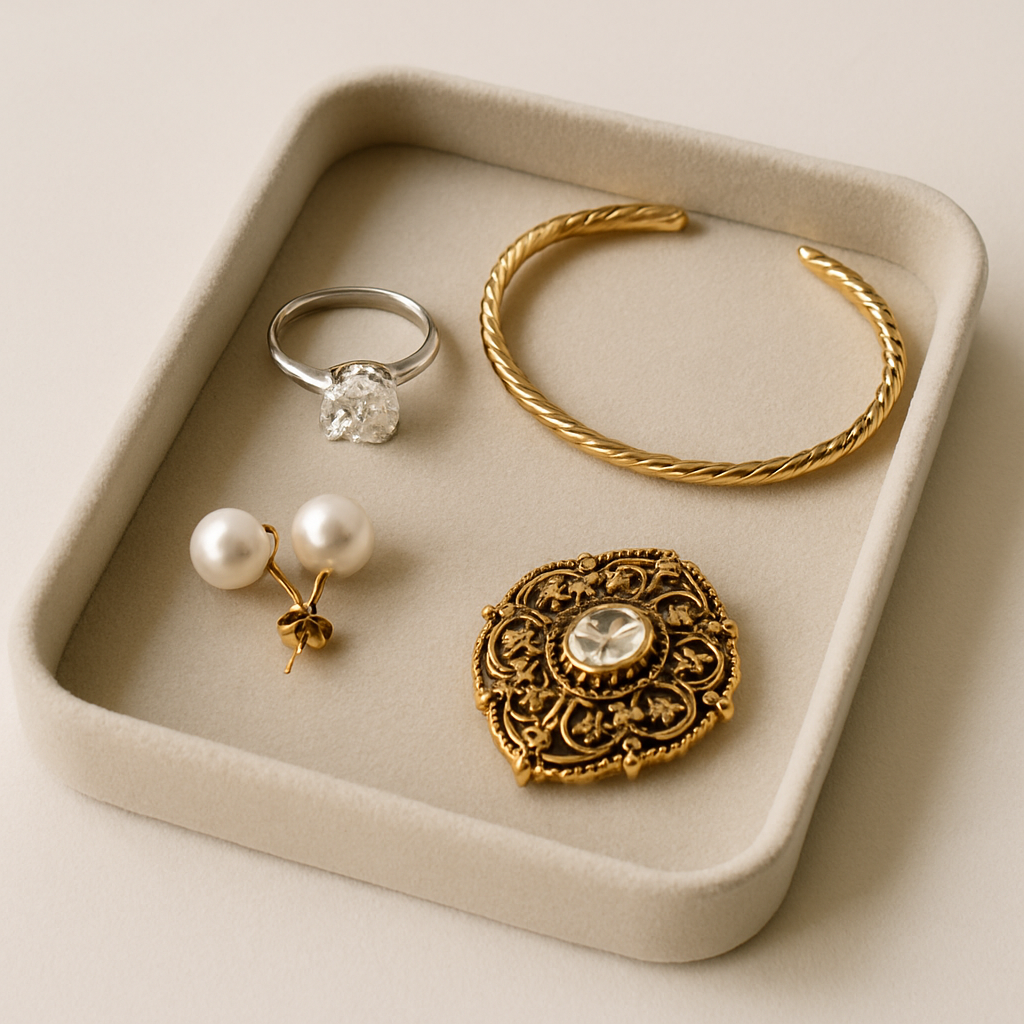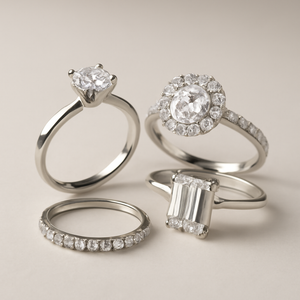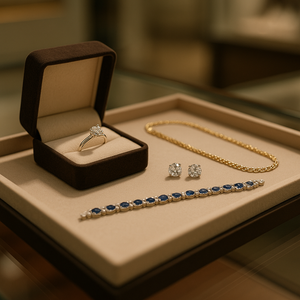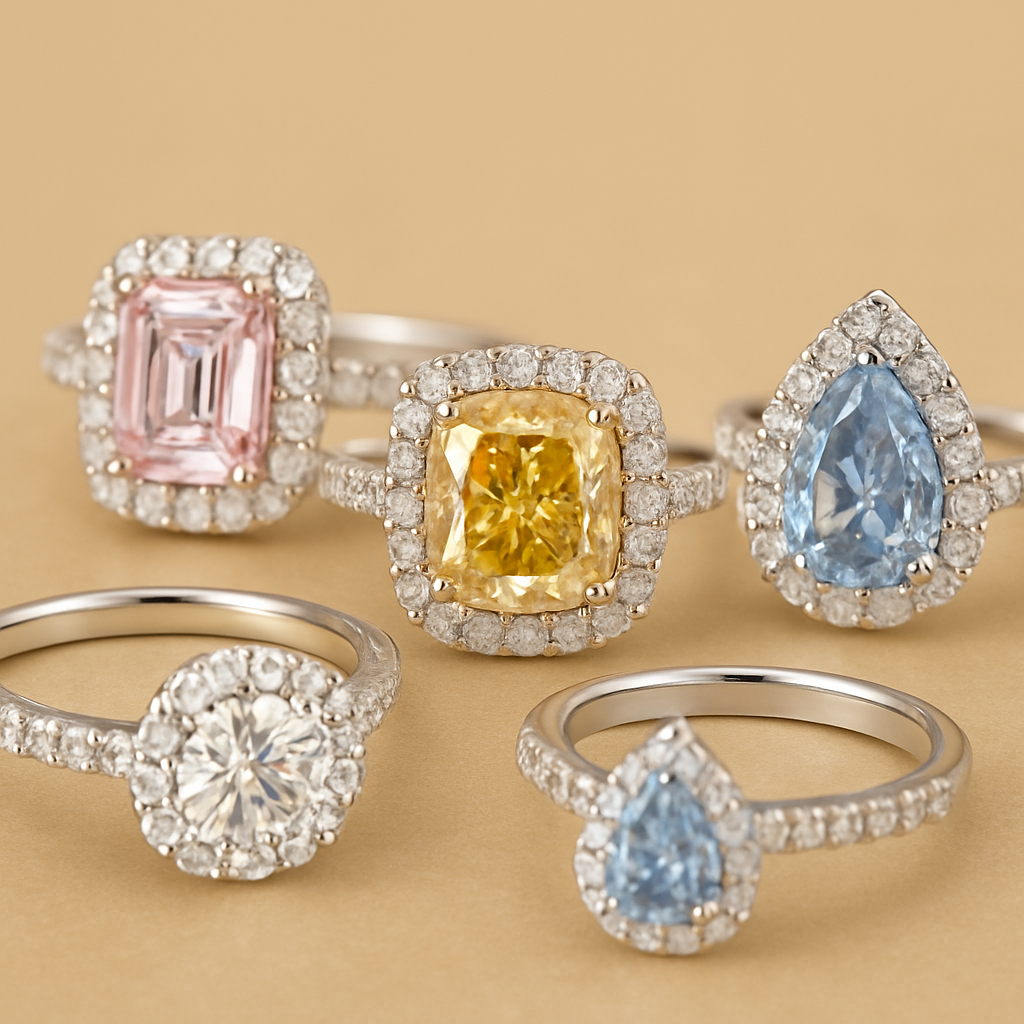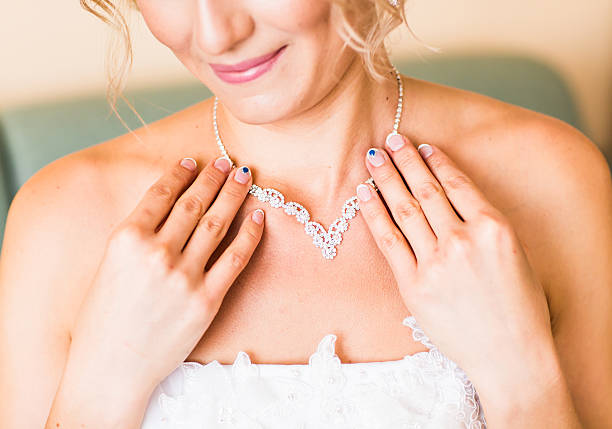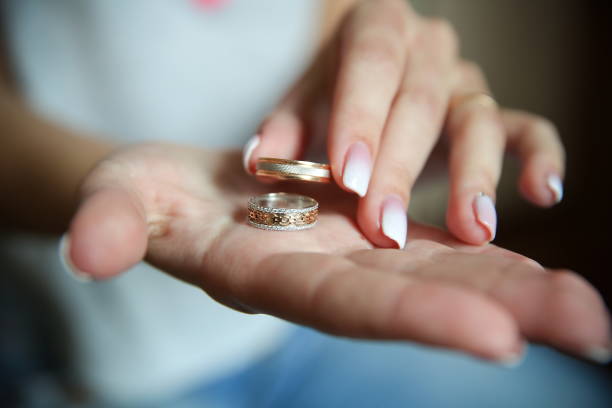When you buy a lovely piece of jewelry, you frequently consider its emotional significance, beauty, and meaning. However, have you ever considered its potential for sale?
You can make better purchasing decisions and even turn your jewelry into a wise financial asset by being aware of its resale value. Let's examine in detail how jewelry retains—or occasionally depreciates—in value over time.
The Difference Between Retail Price and Resale Value
First of all, it's critical to understand that the price you paid for jewelry does not equal its resale value.
The cost of jewelry purchased from a retail establishment includes:
- Establishing a brand
- Work and artistry
- Costs of store overhead
- Marketing costs
- Services and Packaging
But when you sell jewelry again, buyers primarily consider:
- The inherent worth of materials, such as gold, diamonds, and gemstones
- Prices on the market right now
- Recognition of the brand (for high-end pieces)
As a result, unless the item is rare, vintage, or collectible, its resale value is nearly always less than its retail price—sometimes much less.
Key Factors That Influence Jewelry Resale Value
Several important factors determine how much you can expect when reselling your jewelry:
Material Purity
- Gold: The higher karat gold (such as 18K or 22K) is purer and therefore more valuable.
- Platinum: Usually retains value better because it is rare.
- Silver: While in demand, sterling silver generally offers lower resale value than gold and platinum.
Diamond Quality
The 4Cs—Cut, Color, Clarity, and Carat—have a significant impact on diamond resale values.
- Ideal or excellent cuts reflect better and sell for more.
- Near-colorless stones (D-F color grade) are preferred.
- Eye-clean diamonds (without observable inclusions) are worth more.
Brand Name
High-end brands such as Cartier, Tiffany & Co., Van Cleef & Arpels, and Harry Winston are more likely to hold a larger percentage of their initial price in the secondary market.
Current Market Demand
Prices for diamonds, gold, and gemstones vary depending on worldwide demand, economic status, and even fashion.
Jewelry Condition
Items in pristine condition—with few scratches, no missing stones, and original luster—will, of course, command higher prices.
Style and Timelessness
Timeless designs (such as solitaires, tennis bracelets, plain gold chains) will hold up better in terms of resale value than trendy, seasonal designs that can go out of style.
How Different Types of Jewelry Hold Their Value
Not every piece of jewelry is equally valuable.
- Engagement rings: Unless the diamond is extremely rare, they may lose between 30% and 70% of their value.
- Antique and vintage jewelry may be valuable if it is rare, signed, or in high demand.
- Luxury Brand Jewelry: Designer brands typically fetch higher prices when resold, particularly when they are preserved with their original packaging and certifications.
- Custom or highly personalized jewelry appeals to a smaller market, making it more difficult to resell.
Common Mistakes That Hurt Jewelry Resale Value
Most jewelry owners unknowingly reduce their items' value by:
- Stripping Hallmarks: The stamps (marking purity of metal, brand name, etc.) verifying authenticity.
- Excessive Customization: Personalized pieces, fitting individual style, can be unattractive to others.
- Failure to Care for the Jewelry: Scratches, lost gems, or dirt accumulation will reduce appeal.
- Missed Certification: No grading certificate, and most importantly, diamonds, can greatly affect resell bids.
How to Maximize the Resale Value of Your Jewelry
Desire the highest price? Take these wise steps:
- Save All Documentation: Preserve original receipts, grading reports (GIA, IGI), and appraisals.
- Store Safely: Store in individual pouches or jewelry boxes to prevent scratching.
- Keep Regular Cleaning and Inspection: Jewelry in like-new condition maintains value.
- Update Appraisals: Particularly if you intend to sell years later, since market values fluctuate.
- Sell at the Right Time: For instance, when the price of gold is high, gold jewelry can fetch better prices.
Where to Resell Jewelry for the Best Price
Selecting the appropriate resale channel is crucial:
- Reputable Jewelers: Some jewelers can put you in touch with private buyers or offer buyback programs.
- Auction houses: Great for luxury, rare, or vintage jewelry.
- Online marketplaces: Although Worthy, The RealReal, and eBay have sizable audiences, they also demand meticulous listing and customer care.
- Private Sale: Selling directly to collectors or private buyers can result in larger profits, but it's important to take safety and authenticity measures.
- The quickest choice, but frequently the least lucrative, are pawn shops, which provide cash at steep discounts.
Realistic Expectations: How Much Can You Really Get?
Average price expectation:
- 20%-60% of original retail value, varying by quality, brand, and condition.
- Branded luxury pieces and unusual stones could bring closer to 60%-80% occasionally.
- Unbranded mass market jewelry tends to sell closer to 20%-40% original price.
It is better to be realistic in this estimate so as not to be disappointed and have an easy selling experience.
Final Tips Before You Sell
- Get Multiple Quotes: Always shop around and compare offers.
- Verify Buyer Credibility: Particularly for online or private sales.
- Consider Consignment: Some jewelers will show your piece and pay you after it sells.
- Timing Matters: Monitor market conditions and sell strategically.
Conclusion: Knowledge is Your Best Asset
Knowledge of what influences jewelry resale value puts you at an advantage as a buyer and a seller.
Whatever your intention to upgrade, declutter, or sell out, an understanding of the market can mean the difference between a disappointing sale—and a shrewd money move.
✨ Your jewelry has a story to tell—ensure it continues to sparkle, even after chapter one!


